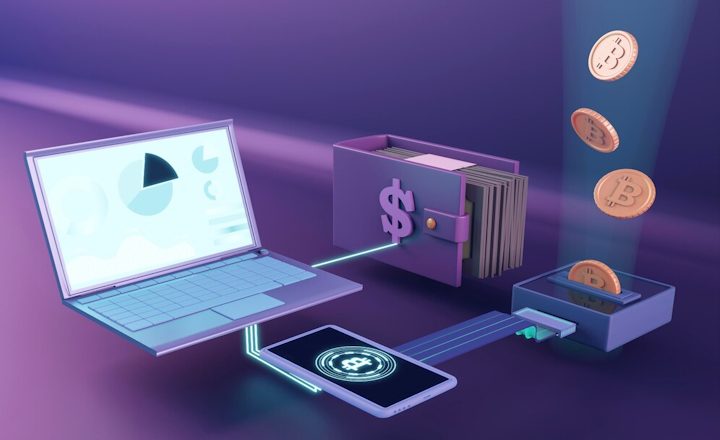
In today’s digital finance landscape, crypto wallets have become essential for managing, storing, and transacting cryptocurrencies. As blockchain technology adoption grows, the demand for secure, user-friendly wallet solutions increases. Crypto wallet development involves many functionalities, from simple storage to advanced features such as multi-signature support and integration with decentralized applications (dApps).
Developers face unique challenges in ensuring robust security measures, user privacy, and seamless user experiences. With the rise of decentralized finance (DeFi) and non-fungible tokens (NFTs), crypto wallets' role has expanded, requiring innovative approaches to design and functionality. This article explores the key aspects of crypto wallet development, including the different types of crypto wallets, the technologies involved, and the implications for users and developers in this dynamic digital ecosystem.
Different types of crypto wallets
Exploring different types of crypto wallets can provide valuable insights into their development. Wallets come in various forms, each with features, benefits, and drawbacks. Here's a breakdown of the primary types of wallets:
Hot Wallets are connected to the internet, making them convenient for everyday transactions. They are ideal for those who frequently trade or use cryptocurrencies. However, their online connectivity makes them more vulnerable to hacking and malware attacks. Examples include web wallets, mobile wallets, and desktop wallets.
Cold Wallets are not connected to the internet, making them a safer option for storing larger amounts of cryptocurrency. They are ideal for long-term storage but lack the convenience of hot wallets for quick transactions. Types of cold wallets include:
Custodial Wallets are managed by third-party services, such as exchanges or wallet providers. Users do not have direct control over their private keys, which can enhance convenience but may pose risks if the provider is compromised. Examples include wallets provided by exchanges like Coinbase or Binance.
Non-Custodial Wallets give users full control over their private keys, enhancing security and privacy. Users are responsible for managing their keys and funds, making this type of wallet suitable for those who prioritize self-custody.
Multisignature Wallets require multiple private keys to authorize a transaction, adding an extra layer of security. This is particularly useful for businesses or groups where multiple approvals are necessary before funds can be accessed.
Best practices for user-friendly digital wallets
The design and functionality of crypto wallets are crucial for user adoption and depend on the type of crypto wallet solution. However, the main principles are the same as for any digital wallet. A well-designed wallet interface improves user interaction, making it easier for new users to enter cryptocurrency by reducing the learning curve.
Key elements of an intuitive wallet interface include:
Simplified Navigation: An intuitive design lets users find essential features quickly, such as sending or receiving assets, accessing transaction history, and managing settings.
Clear Tutorials and Help Centers: Providing users with easy-to-understand guides can enhance their understanding of wallet functionalities, increasing engagement.
Customizable Dashboards: Allowing users to tailor their dashboard can enhance productivity and improve the overall user experience.
Responsive Design: It is essential to accommodate diverse user bases by ensuring that wallets perform seamlessly across all devices, including desktops and mobile phones.
Another important aspect to consider is integrating security features without compromising usability. Users must feel confident that their assets are safe, so security protocols should be seamlessly woven into the user experience. For instance, implementing biometric or two-factor authentication should be straightforward and not disrupt the flow of transactions.
Conclusion
Designing and developing a crypto wallet refers to creating a specific type of wallet. Focusing on user experience can lead to higher user satisfaction, retention, and the likelihood of users recommending the wallet to others. By prioritizing security and usability, wallet designers can build trust and encourage users to engage more deeply with their cryptocurrency holdings. Finding a company specializing in developing innovative software solutions for digital payments, payment processing, and cryptocurrency integration is crucial. Such a company can provide valuable advice and assistance in developing crypto wallets.





